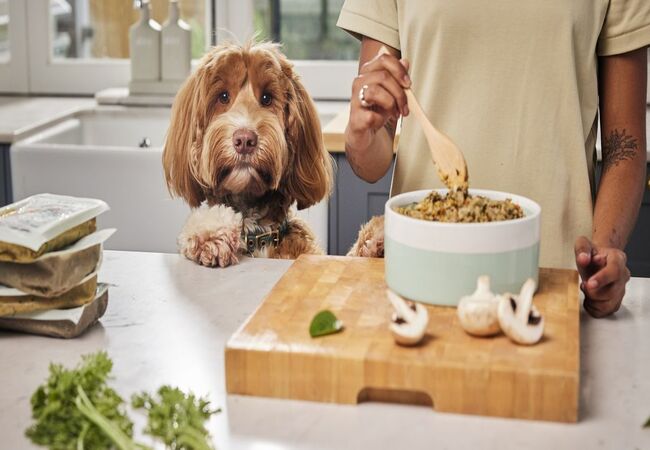Balanced Homemade Dog Food 2025: Vet's Complete Recipe Tips 🍗🐶

In this article
How to Make Sure Your Homemade Dog Food Delivers the Right Nutrients in 2025 🏡🥘🐶
By Dr Duncan Houston BVSc
1. Why Homemade Food Needs Extra Care
Cooking for your dog offers ingredient control, avoidance of fillers, and dietary customization—but it’s hard to achieve balance. Most homemade diets fail to meet nutrient standards without expert guidance.
2. Essential Nutrients Every Homemade Meal Needs
AAFCO defines six nutrient classes: water, protein, fats, carbohydrates (including fiber), vitamins, and minerals.
2.1 Protein
Should make up ~20–30% of calories. Sources include lean meat, poultry, fish, and eggs. Muscle meat + organ meat ensures amino-acid completeness.
2.2 Fat & Essential Fatty Acids
At least 5.5% fat—plant or animal sources plus fish oil for omega‑3s support skin, cell function, and vitamin absorption.
2.3 Carbohydrates & Fiber
Up to 50% calories via grains, potatoes, rice, fruits, veggies, and fiber for healthy digestion.
2.4 Vitamins & Minerals
Hardest to balance at home—calcium, phosphorus, zinc, magnesium, iron, vitamins A/D/E/K/Bs are often deficient.
3. Key Nutrient Pitfalls
- Calcium-phosphorus imbalance: Common when feeding meat without bone or supplements—risks bone issues in puppies.
- Fat-soluble vitamins: Excess vitamin A from too much liver, or deficiency without supplements.
- Minerals: Zinc, magnesium, and iron are often too low in homemade diets.
- Vitamin D: Low in homemade diets unless properly supplemented—critical for calcium metabolism.
4. Vet-Supervised Planning Is Essential
Work with a board-certified veterinary nutritionist or use vetted recipes (Balance It, PetDiets, ACVIM).
Do not modify recipes without professional review—many pet owners make errors in ingredient ratios.
5. Use Supplements for Completeness
Vitamin-mineral blends like Balance It® Canine fill in gaps—just mix into your home recipes per instructions.
Adjust calcium sources if feeding meat without bone—avoid static recipes.
6. Monitor and Adjust Over Time
Have your vet run nutrient panels, check body condition, and stool quality—every 6–12 months. Adjust recipe based on life stage and activity.
7. Safeguard Your Dog’s Health
- Hygiene: Proper cooking and storage prevent bacterial risks.
- Ingredient safety: Avoid toxic foods like onions or grapes.
- Precise measuring: Weigh ingredients and use scales versus volume cups.
8. Sample Balanced Ratio
A well-designed daily recipe (calorie-adjusted):
- 40% lean cooked meat (chicken, turkey, beef)
- 10% organ meat (liver or kidney)
- 20% cooked grains or starchy veggies
- 20% steamed veggies/fruits for fiber and vitamins
- 5% healthy fat (olive oil, fish oil, flaxseed)
- Vitamin-mineral premix per brand directions
- Water for cooking and hydration
Exact ingredient amounts must be vet-calculated based on your dog’s calorie needs.
9. Return to Commercial Food When Needed
If your dog shows nutrient concerns or life circumstances change, switch back to an AAFCO-complete commercial diet—or a hybrid approach using toppers.
10. Ask A Vet Tools & Support
- 📱 Ask A Vet App – Real-time vet help with recipe review, nutrient gaps, and monitoring results.
- 🎓 Nutrition Webinars – Learn how to weigh ingredients, balance meals, and measure outcomes.
- 🛠️ Balance It® & Woopf/Purrz Toppers – Vet-formulated supplements for vitamin/mineral and joint/skin support.
11. Final Takeaway
Creating homemade dog food can be rewarding, but it must be balanced meticulously. Always use vet-approved recipes, include supplements, measure ingredients, and track your dog’s health and lab results. With proper planning and professional oversight, your homemade meals can support vibrant health in 2025 and beyond 🥘🐾❤️.
Need help tailoring recipes or checking nutrient intake? Visit AskAVet.com or download our app—expert veterinary guidance anytime.






